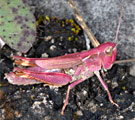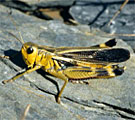Stetophyma grossum (Linnaeus, 1758)
![Stetophyma grossum: Male (eastern Swabian Alb, Southern Germany, September 2012) [N] Stetophyma grossum: Male (eastern Swabian Alb, Southern Germany, September 2012) [N]](thumbs/acrididae/grossum_m2012.jpg)
![Stetophyma grossum: Male (eastern Swabian Alb, Southern Germany, September 2012) [N] Stetophyma grossum: Male (eastern Swabian Alb, Southern Germany, September 2012) [N]](thumbs/acrididae/grossum_2m2012.jpg)
![Stetophyma grossum: Male (eastern Swabian Alb, Southern Germany, September 2012) [N] Stetophyma grossum: Male (eastern Swabian Alb, Southern Germany, September 2012) [N]](thumbs/acrididae/grossum_3m2012.jpg)
![Stetophyma grossum: Male (eastern Swabian Alb, Southern Germany, September 2012) [N] Stetophyma grossum: Male (eastern Swabian Alb, Southern Germany, September 2012) [N]](thumbs/acrididae/grossum_4m2012.jpg)
![Stetophyma grossum: Male (eastern Swabian Alb, Southern Germany, September 2012) [N] Stetophyma grossum: Male (eastern Swabian Alb, Southern Germany, September 2012) [N]](thumbs/acrididae/grossum_5m2012.jpg)
![Stetophyma grossum: Male (eastern Swabian Alb, Southern Germany, September 2012) [N] Stetophyma grossum: Male (eastern Swabian Alb, Southern Germany, September 2012) [N]](thumbs/acrididae/grossum_6m2012.jpg)
![Stetophyma grossum: Male (eastern Swabian Alb, Southern Germany, September 2012) [N] Stetophyma grossum: Male (eastern Swabian Alb, Southern Germany, September 2012) [N]](thumbs/acrididae/grossum_7m2012.jpg)
![Stetophyma grossum: Male (Mainhardt near Schwäbisch Hall, August 2010) [N] Stetophyma grossum: Male (Mainhardt near Schwäbisch Hall, August 2010) [N]](thumbs/acrididae/grossum_m2011.jpg)
![Stetophyma grossum: Male [N] Stetophyma grossum: Male [N]](thumbs/acrididae/grossum_m.jpg)
![Stetophyma grossum: Female (eastern Swabian Alb) [N] Stetophyma grossum: Female (eastern Swabian Alb) [N]](thumbs/acrididae/grossum_w08.jpg)
![Stetophyma grossum: Female (eastern Swabian Alb, Southern Germany, September 2012) [N] Stetophyma grossum: Female (eastern Swabian Alb, Southern Germany, September 2012) [N]](thumbs/acrididae/grossum_w2012.jpg)
![Stetophyma grossum: Female (eastern Swabian Alb, Southern Germany, September 2012) [N] Stetophyma grossum: Female (eastern Swabian Alb, Southern Germany, September 2012) [N]](thumbs/acrididae/grossum_2w2012.jpg)
![Stetophyma grossum: Female (eastern Swabian Alb, Southern Germany, September 2012) [N] Stetophyma grossum: Female (eastern Swabian Alb, Southern Germany, September 2012) [N]](thumbs/acrididae/grossum_3w2012.jpg)
![Stetophyma grossum: Female [N] Stetophyma grossum: Female [N]](thumbs/acrididae/grossum_w.jpg)
![Stetophyma grossum: Mating (eastern Swabian Alb, Southern Germany, September 2012) [N] Stetophyma grossum: Mating (eastern Swabian Alb, Southern Germany, September 2012) [N]](thumbs/acrididae/grossum_kopula2012.jpg)
![Stetophyma grossum: Larve [N] Stetophyma grossum: Larve [N]](thumbs/acrididae/grossum_l2011.jpg)
![Stetophyma grossum: Larve [N] Stetophyma grossum: Larve [N]](thumbs/acrididae/grossum_2l2011.jpg)
![Stetophyma grossum: Habitat: silting pond with extensive wet meadow in the surrounding [N] Stetophyma grossum: Habitat: silting pond with extensive wet meadow in the surrounding [N]](thumbs/acrididae/grossus_h.jpg)
![Stetophyma grossum: Habitat on the eastern Swabian Alb, Southern Germany: wet meadows (2011) [N] Stetophyma grossum: Habitat on the eastern Swabian Alb, Southern Germany: wet meadows (2011) [N]](thumbs/acrididae/grossum_h2011.jpg)
Nutrition:
Primarily the species feeds on grasses (Poaceae, Cyperaceae), but also on Juncus.
Habitat:
Stetophyma grossum inhabits wet meadows, wet depressions, fens, ditches, moors, stream banks and similar locations.
Life cycle:
Adults occur from late June to October. The eggs overwinter in or near the ground (ground vegetation) and need a lot of moisture. The adults prefer borders between unmown areas and those which have been cut a view weeks ago. Structural diversity and mosaic usage increase their chances of survival.
Endangerment: strongly endangered
Endangerment factors:
This beautiful grasshopper is rapidly declining due to drainage, agricultural intensification with to many cuttings, overbuilding and felting (fallow land after abandonment of cutting). Often it exists only in remnants, although Stetophyma grossum is not too demanding and can cope with small areas at least for a while.
Remarks:
Stetophyma grossum raises quite high in the Alps. I observed imagines along a small stream in Valais still at over 2300m above sea level.
The overall distribution ranges from Northeastern Spain, Ireland and parts of Northern Europe to Siberia. In Europe it misses especially in most of the Iberian Peninsula, most of Italy (except the northernmost regions) and Greece.


